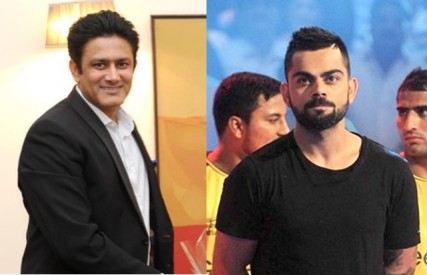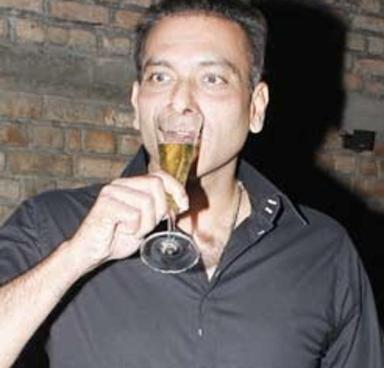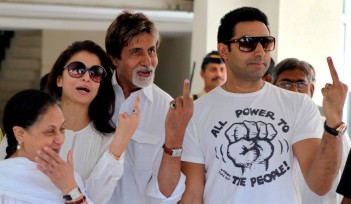India has lost an ODI series at home after nearly 3 years. After a set of splendid ODI results all around the world, this result has thrown a spanner in the works that is composition of the World Cup squad.
All through this series, India has missed the crucial element of balance. For example, in the last match, playing Jadeja in the all-rounder’s spot left India weak in batting terms. In other matches, the bowling stocks were low. The Indian team seemed like a man or woman struggling to sleep, shivering in the winter cold and trying to adjust with a short blanket inadequate to keep all ends covered; whichever end one covered, the cold draft would invariably sneak in at the other, destroying one’s peace of mind.
Though he might have some distance to go, Hardik Pandya was sorely missed. His absence highlighted one of the weaknesses of this Indian team—India doesn’t have a like-for-like replacement for him. Ravindra Jadeja, who was originally left out for the series, took his place, but he’s not an able deputy for the buccaneer from Baroda. Make no mistake, Ravindra Jadeja is possibly India’s best outfielder ever, but his bowling stocks have dipped after the 2017 Champions Trophy final; while he’s a safe batsman, his batting in this series has only added to the previous evidence that he doesn’t have the skills needed to function as an ODI number 7—something that Hardik Pandya has in plenty.
If you think I’m being unnecessarily harsh by cherry picking one bad series, we can proceed to look at his entire record. His T20I strike rate is 93.54, and his corresponding ODI numbers are at ~84. With such statistics, one can safely conclude that big hitting in the limited formats was never his forte. Now, with less than 80 days to go for the ultimate trophy in cricket, the Indian team looks much weaker without the presence of its biggest hitter (who strikes at ~116 in ODIs).
This is just one example (of many) of the muddled thinking on part of the Indian selectors and team management affecting the team in recent times. With some puzzling choices, it looks as if the Indian ODI team has painted themselves into a corner with just the warm-up fixtures remaining before the World cup. To some extent, the world’s best top 3 and 3 world-class bowlers having bad days have exposed the team’s frailties.
Keen observers of Indian cricket may point to Vijay Shankar’s ascension to the all-rounder role, but it isn’t the right counter; while he’s been given some batting opportunities in the past few matches, we don’t know much about his bowling. Bowling 10 tidy overs in ODIs is a big challenge on today’s pitches (even more so because Pandya himself is expensive and struggles to complete his quota), and we don’t have much data on how Shankar might perform; he wasn’t given the ball as much as a supposed all-rounder might merit. What is more, someone like Krunal Pandya hasn’t been given a chance even though he might be most suited to the number 7 position.
Similarly, a middle order slot was there for the taking some time ago with Ambati Rayudu, Dinesh Karthik and Manish Pandey being the contenders. While Rayudu’s middling performance seems to have reopened this old wound as he’s yet to show that he can keep up with the demands of the present-day middle overs tempo. In spite of a great average, a strike rate of ~80 doesn’t inspire confidence; besides, his record against the top ODI sides hasn’t exactly been world-beating. A rejuvenated Dinesh Karthik and Manish Pandey are busier batsmen and better fielders but they have got the short shrift (especially Pandey, given that he’s played only 1 match since 2017). This will assume greater significance should one more slot open up due to another unfortunate injury (say, God forbid, to someone like the injury-prone Jadhav or Hardik) and India will be forced to take another player short of required match practice.
Due to this lack of foresight, Indian fans don’t have a clue about the identity of the reserve opener or that of the reserve keeper either; K L Rahul was supposed to be a shoo-in for the top order but his recent showing has not been up to the mark. The reserve keeper is a shootout between Pant and Karthik, but time is running out here too. Although Karthik seems to have received a rough decision after being left of out the Australia series, I wouldn’t rule him out as Pant hasn’t grabbed his chances.
Going into the World Cup, the lack of battle-hardened players can leave the team short of firepower at the most crucial stages. Credit has to be given to the team management for rotating the fast bowlers, but the other players haven’t been given the similar treatment. What was the need for taking such a strong team to the 2018 Asia Cup? Resting the entire top order could have given the fans and the team management a peek into the contenders for the other batting slots. Moreover, with India performing splendidly in the several bilateral ODI series, they couldn’t have gotten a better chance to experiment with newer personnel in the dead rubbers. Thanks to such myopic vision, the team looks shortchanged at this juncture.
Due to these suboptimal strategies, India has no option but to bite the bullet and take a leap of faith. With the IPL around the corner, some might argue that T20s serve as a proving ground for ODI team selection, and the Indian team management’s attitude towards bilateral T20s certainly does echo a similar thought process. But T20s and ODIs are inherently different ball games with very different underlying mechanics. Though there is a decent overlap in the skills department, the ODI still provides a chance for a team to build an innings (due to wickets not being overvalued) and staying power in far more important than pure hitting or dot-ball bowling ability. Hence, using IPL form as a substitute for ODI performance is fraught with risk.
Right now, the team composition rests on a knife edge and is one unfortunate injury/incident away from being thrown completely out of gear—the lack of contingency planning can hurt the team badly. And it is not that there aren’t players waiting in the wings; rather, it has been a case of not giving the bench strength enough high-quality chances at the right time to keep the players ready in reserve should the opportunity present itself. Due to this confusion, many team members don’t know their exact role and the team management doesn’t know how the replacements will perform if push comes to shove at the most inconvenient time. The Indian fans will certainly hope that it isn’t too late and that the team won’t have to rely on good fortune (as it happened in 2011, with Yuvraj Singh’s performances) as it chases glory.












